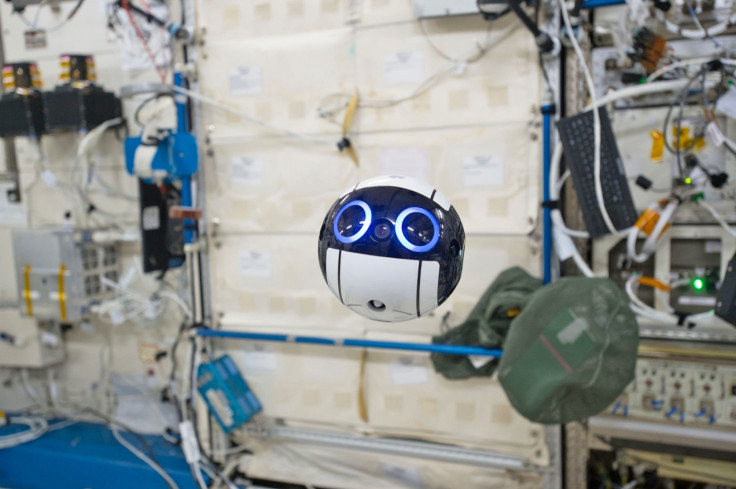The ISS now has an adorable floating robot 'Int-Ball' to help space scientists work on experiments
The Japanese camera bot has been designed to autonomously zip about in space and record video and images.

Astronauts aboard the ISS (International Space Station) now have a new crew member – a cute little floating camera bot named Int-Ball. The Japanese robot has been designed to autonomously zip around in space and help ISS scientist work on space experiments.
The spherical camera bot, with its monochrome body work and round blue eyes looks like something out of a Pixar movie and was delivered to the ISS in June via a SpaceX cargo spacecraft. Int-Ball is now operational and is currently undergoing initial testing. Jaxa (Japan Aerospace Exploration Agency) has released photos and videos recorded by the camera bot.
Int-Ball has been designed to autonomously move about in space and can also be remotely controlled by ground control scientists on Earth. The images and videos captured by the camera bot can also be relayed back to scientists aboard the ISS in real time.
"The camera adopts existing drone technology and its exterior and inner structures were all manufactured by 3D-printing," Jaxa said. The Japanese space agency said that ISS astronauts spend around 10% of their time working with a camera, photographing equipment that needs further evaluation. However, Int-Ball could help free up ISS scientists' time by assuming the role of on-board photographer and allow them to focus on conducting experiments and perform repairs.
Int-Ball only weighs around 1kg and measures 15cm in diameter. The surface of the camera bot has a dozen fans that help it move around. The ISS has been fitted with several "3D Target Markers" on its internal walls to help Int-Ball navigate. The bot's recording camera is located between its eyes, to help astronauts determine what it is looking at and recording.
Jaxa said that it intends to "further improve Int-Ball's performance, enhance its functions, and promote the automation and autonomy of extra- and intra-vehicular experiments, while seeking to acquire the robotics technology available for future exploration missions".
Int-Ball's successful incorporation into the ISS crew could likely lead to more such drones being added to the space station to perform a variety of jobs within and outside the ISS.
© Copyright IBTimes 2025. All rights reserved.






















